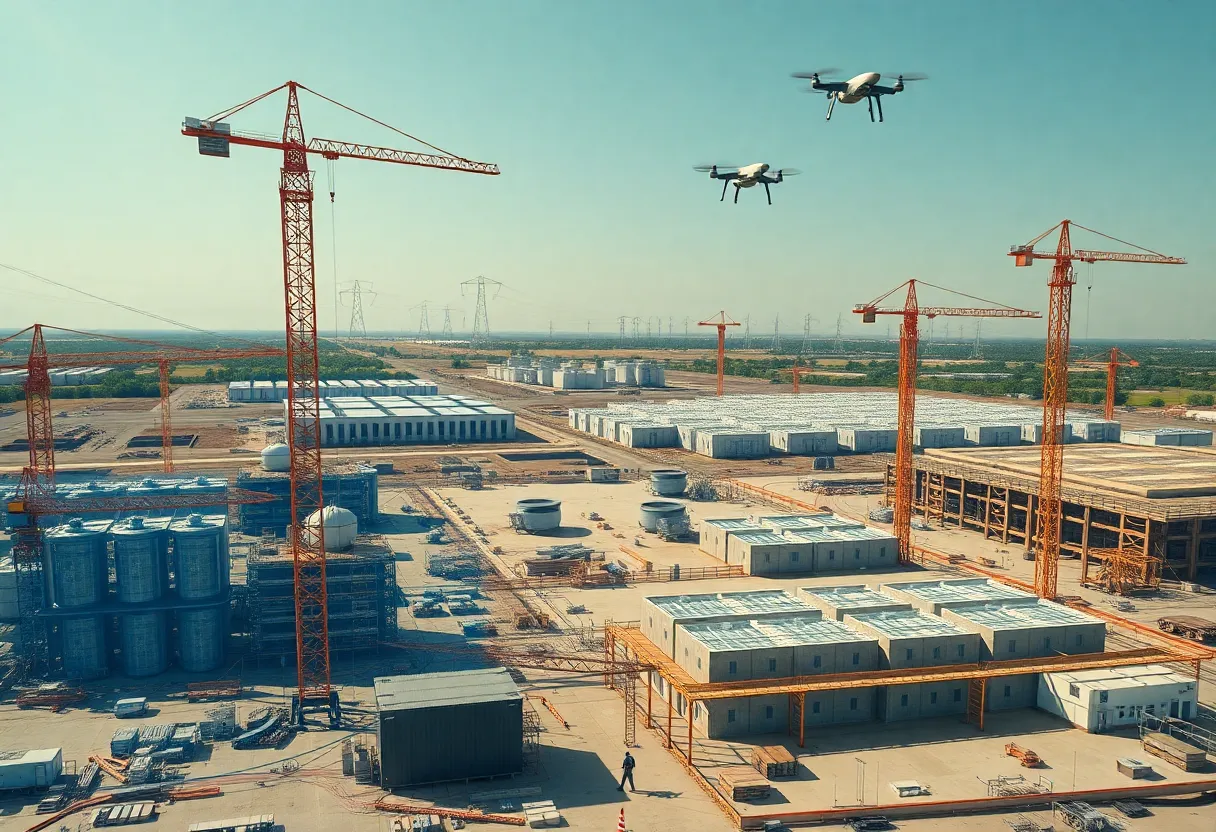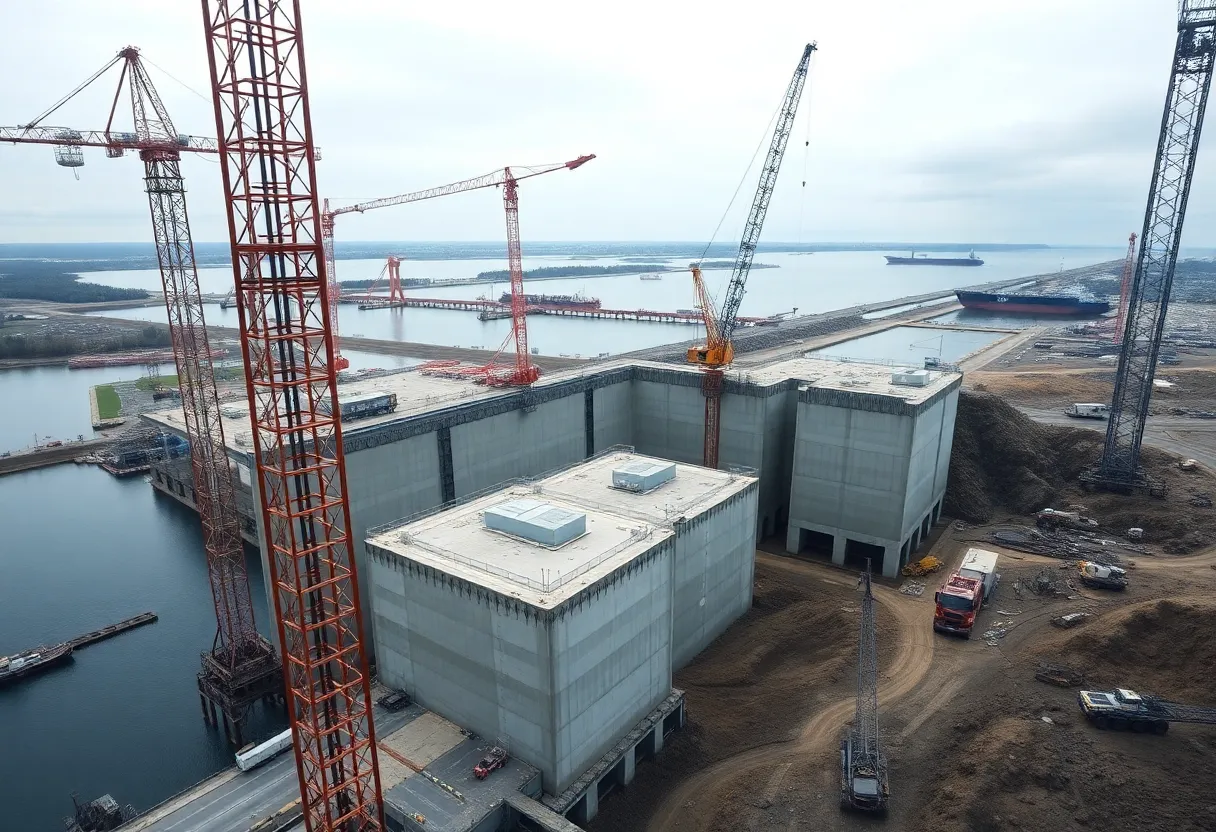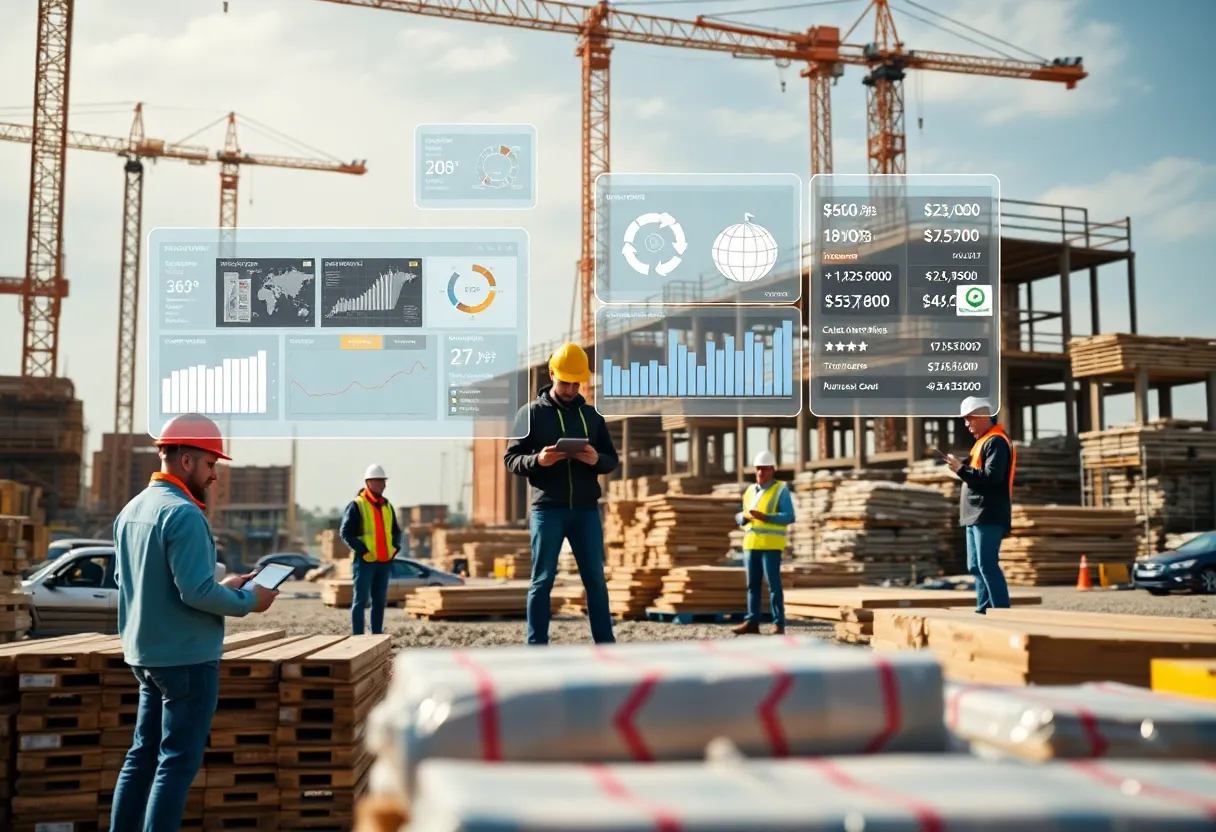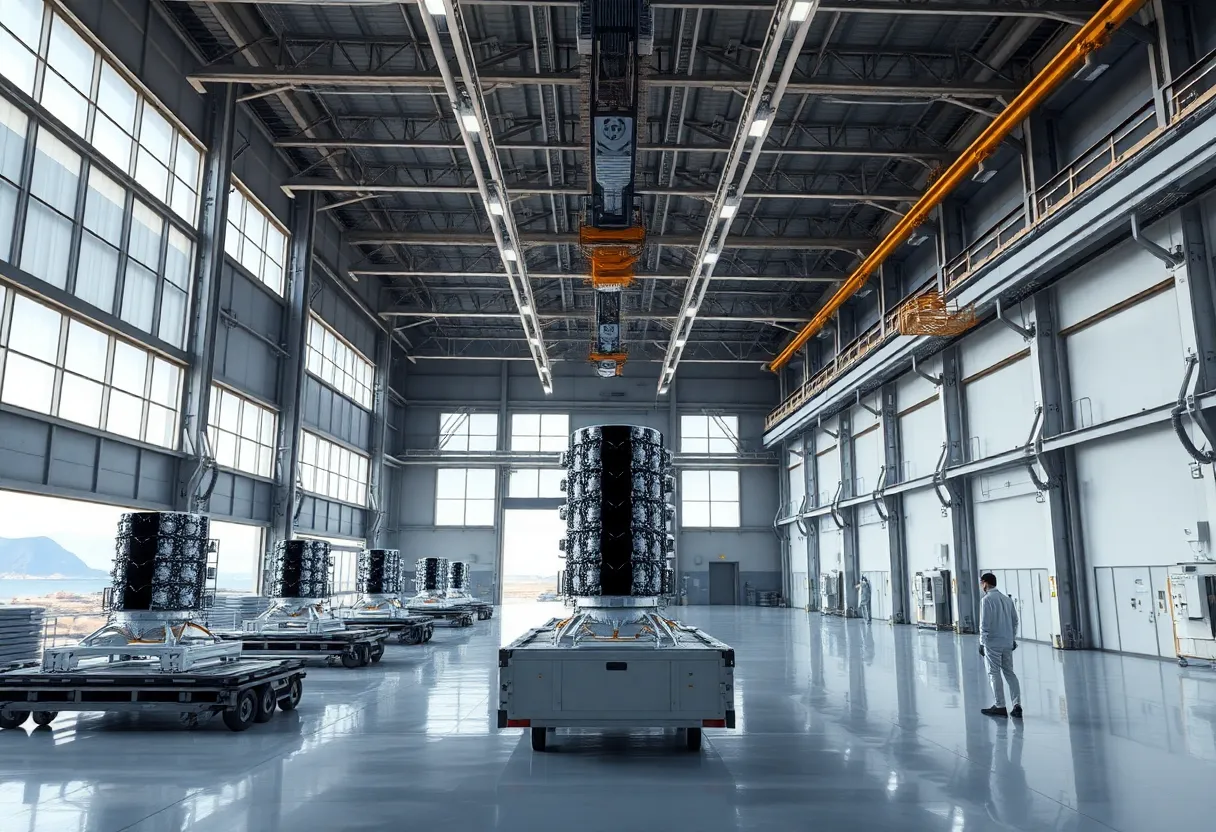Dublin, September 12, 2025
News Summary
A Dublin-based market report finds the global AI-in-construction market currently valued at about US$2.4 billion and forecast to expand sharply to US$12.1 billion by the end of the decade at a strong CAGR. The study examines adoption trends, technology integration and profiles a broad set of industry players. AI applications span project planning, scheduling, safety monitoring with computer vision and wearables, generative design and BIM integration, plus robotics for repetitive tasks. The report also highlights how rising AI compute demand is increasing data center power needs and creating local grid and permitting challenges for planners and developers.
Global AI in Construction Forecast: $12.1 Billion by 2030
The market for Artificial Intelligence in Construction is projected to grow from an estimated US$2.4 billion in 2024 to about US$12.1 billion by 2030, a compound annual growth rate (CAGR) of 31.0% over the period. This trajectory reflects AI’s role in transforming how projects are planned, executed, and maintained through advanced automation, predictive analytics, and precision management.
What AI is doing in construction
AI is being used to streamline project management, automate repetitive tasks, and enhance on-site safety. In planning and scheduling, AI algorithms analyze historical data to build realistic timelines, anticipate potential delays, and improve resource allocation and cost control. This data-driven approach supports teams across the life cycle of a project, from design to operations, by enabling faster, more reliable decisions.
Key growth drivers
Growth is driven by several factors working together. These include advances in digital technology, a growing demand for efficiency and sustainability, and evolving industry regulations. The rapid cost reduction and greater accessibility of AI tools make them usable by construction firms of all sizes. The rise of cloud computing and edge processing enables real-time data analysis on-site without heavy upfront infrastructure. Facing labor shortages and rising costs, firms turn to AI-driven robotics and automation to complete labor-intensive tasks more quickly. A stronger push toward sustainability and tighter environmental rules further encourage AI adoption, including design tools, material recommendations, and predictive maintenance of building systems.
Safety, regulation, and the broader impact
Regulatory attention to health and safety is a major driver, with AI enabling proactive safety management through on-site monitoring and compliance support. On-site safety improvements come from computer-vision systems that track activities and prevent rule violations, and from wearables that monitor worker health and fatigue. Predictive analytics help identify risk patterns from historical accident data and environmental conditions, suggesting preventative measures. By combining these capabilities with robotics and autonomous machines, the industry can shorten timelines, cut labor costs, and support safer work sites.
AI’s influence on design, efficiency, and sustainability
AI enables data-driven decision-making and better coordination through tools that support more accurate and sustainable designs. Generative design explores many design permutations based on constraints such as materials, loads, and environmental impact, delivering optimized forms that balance aesthetics, performance, and sustainability. Environmental simulations help assess impact and performance under different conditions, guiding the selection of lower-carbon materials. In addition, robotics and autonomous machines handle repetitive tasks such as bricklaying or earth-moving, speeding up timelines and mitigating labor shortages. AI in BIM (Building Information Modeling) improves on-site coordination with real-time updates and clash detection, reducing rework and improving collaboration.
Report content and accessibility
The market coverage includes features such as Key Insights, Scope of the Study, Key Attributes, Key Topics Covered, and sections on Market Overview and Market Trends & Drivers. The study also highlights focus on select players and notes that the report features information on hundreds of companies within the AI-in-construction landscape. An alternate version of related materials cites a 2023 baseline of US$1.8 billion and reiterates the US$12.1 billion forecast for 2030 with the same 31.0% CAGR for the period from 2023 to 2030.
Context from energy and data-center developments
In parallel industry developments, massive data-center growth in some regions has raised concerns about electricity demand and grid capacity. For example, a major data-center cluster near a capital city has drawn attention for its energy use, which can exceed the consumption of a large portion of households. This context highlights how AI-driven infrastructure and its data requirements intersect with energy policy, grid reliability, and regional sustainability goals. The broader region has systematic reliance on wind and other renewables, while regulators consider expansion limits and timelines for new facilities. Leaders note that planning for AI and data-center growth must balance electricity supply, environmental impact, and local community considerations.
What the report covers in brief
The publication outlines the Key Insights, Scope, Attributes, and Topics Covered, with a focus on Market Overview and Market Trends & Drivers, including observations on the role of AI in modernizing design, planning, and safety practices. It also features a survey of companies involved in the AI-in-construction space, noting that hundreds of players contribute to the evolving ecosystem.
FAQ
The market is projected to reach about US$12.1 billion by 2030.
The compound annual growth rate is estimated at 31.0% for 2024 through 2030.
Key drivers include advances in digital technology, demand for efficiency and sustainability, evolving regulations, lower tool costs, cloud and edge computing capabilities, labor shortages, and the push for safer, more predictable projects.
AI enables real-time monitoring, hazard detection, and automatic enforcement of safety protocols through computer vision, risk analytics, and wearable health monitoring.
AI enhances BIM with real-time data updates, improved clash detection, and better coordination across design, construction, and operation phases.
Generative design uses AI to explore multiple design options based on constraints, delivering optimized outcomes that balance aesthetics, performance, and material use.
AI-driven construction and data-center expansion increase electricity demand, so reliability, renewable sourcing, and regulatory planning become important to maintain grid stability and meet environmental goals.
Robotics and autonomous machinery handle repetitive tasks; cloud and edge computing enable real-time analytics; and AI integrates with BIM to improve coordination and reduce rework.
| Feature | Details |
|---|---|
| 2024 market size | US$2.4 billion |
| 2030 forecast | US$12.1 billion |
| CAGR (2024–2030) | 31.0% |
| Primary uses | Streamline project management, automate tasks, enhance on-site safety |
| Key growth drivers | Digital tech advances, efficiency/sustainability demand, regulations, lower tool costs, cloud/edge computing |
| Technologies involved | Automation, predictive analytics, generative design, BIM integration, robotics |
| Safety features | Computer vision, hazard detection, wearables, predictive analytics |
| Context: energy/data centers (Ireland) | High electricity demand, regulatory limits on new centers, emphasis on renewables and grid stability |
Deeper Dive: News & Info About This Topic
Additional Resources
- ResearchAndMarkets / BusinessWire: Artificial Intelligence (AI) in Construction Global Report 2024
- Wikipedia: Artificial intelligence in construction
- GlobeNewswire: AI in Construction — Strategic Intelligence Report 2025
- Google Search: AI in construction market 2025
- AP News: AI data centers in Ireland
- Encyclopedia Britannica: Data center (search)
- Aon Insights: The AI data-center boom — strategies for sustainable growth & risk management
- Google Scholar: data center sustainability
- DataCenterKnowledge: New data-center developments — January 2025
- Google News: data center construction 2025





